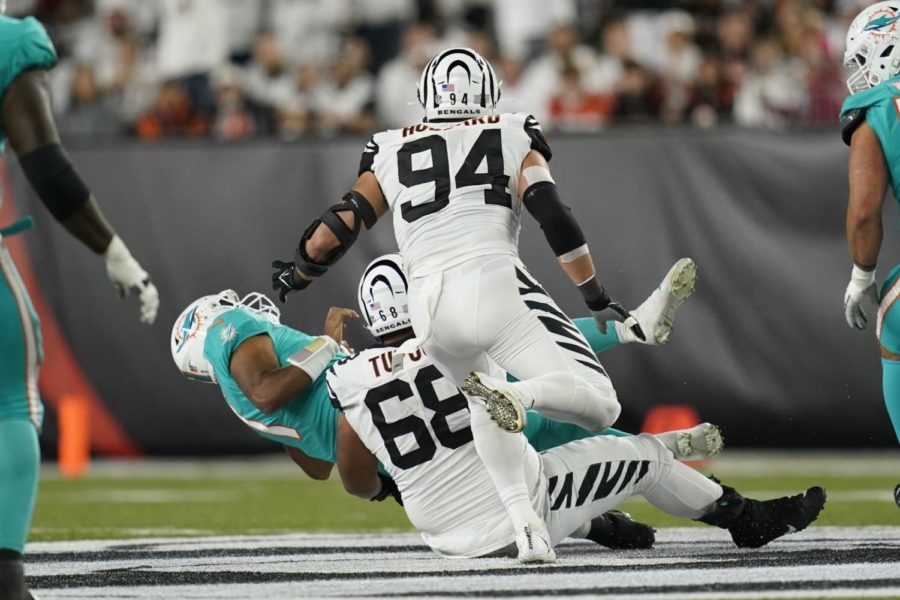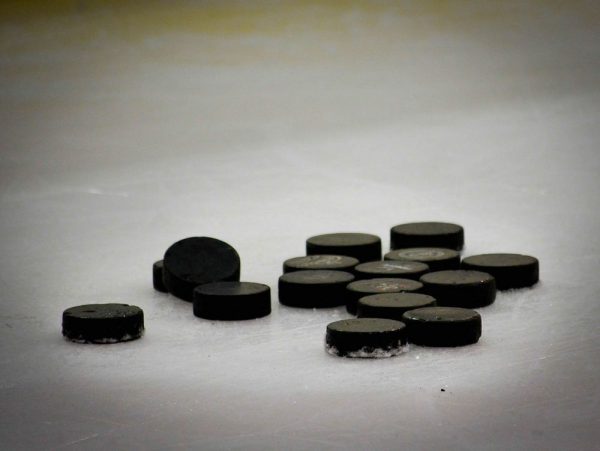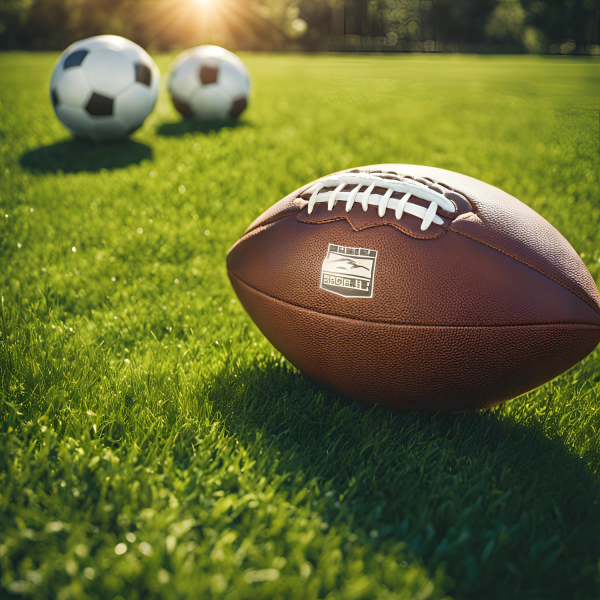How good is the NFLs concussion protocol?
After Tua Tagovailoas injury, the NFL has caught come heat. Tua was flung into the ground and when he stood up, he almost fell back over. He was evaluated for a concussion and then was put back into the game when it was clear he had a concussion. The next week Tua was hit into the ground once again, and was carried off on a stretcher and went to the hospital. This leads everyone to think, how good is the NFLs concussion protocol?
What are the steps of concussion protocol?
“Each step of the league’s concussion protocol is determined by a team physician in consultation with an unaffiliated neurotrauma consultant on the sideline,” said Mike Jones. This means that trained professionals that are making sure these players are okay. At the end of the day, the team physician gets to decide if the player can stay in. According to The Athletic, the steps in the NFLs concussion protocol after resting are symptom-limited activity, aerobic exercise, football specific exercise, non-contact training drills, then full football training drills. NFL players have to take it easy before they can get back to work, which is best.
How long has this been going on?
“In 1997, the American Academy of Neurology released guidelines that said players should be taken out of games if they have concussion-like symptoms within 15 minutes after an injury, due to the risk of further brain damage. Three years later, members of the MTBI criticized the report, saying it lacked research” said Edward Sudelan, a journalist for Sporting News. This proves that the NFL has been working on preventing head injuries. Tuas case is not the only time something like this has happened. “In 2003, Dr. Kevin Guskiewicz warned in a paper that repeated concussions could lead to slower recovery of neurological function. At the same time, Pellman, who was the Jets team doctor, sent wide receiver Wayne Chrebet back into a game after Chrebet had been knocked unconscious.” said Sudelan. This makes you think, how could the NFL do this over and over again? Ben Morse, a journalist for CNN, has said 99% of the passed away NFL players that had their brains donated contained CTE. The NFL needs to try to prevent this and leaving concussed players in the game is not a good way to prevent this.
Why was Tua left in the game

Tua was put back in the game because the team doctor thought it was his back that he hurt, and not his head. Tua got hit and then he got back up and almost fell over again. Morse said against the Bills, Tua had a “no-go” sign and was still in the game. Since this is against protocols, the doctor was fired.
What are examples of a “no-go sign
“If a player gets hit hard, then they get evaluated for any “no-go” symptoms. If they have instability, confusion, or loss of consciousness, then that is considered a no-go and they are done for the day and will get further examined after the game,” Sudelan said. The “no-go” is a must because if a player still passes all the tests, you still can tell if their concussed. Instead of using all the tests, if a doctor can tell they are acting out of normality then they should not play again.
What is CTE?
CTE is “Chronic Traumatic encephalopathy”. This is a brain condition where you continuously get hit in the head. A researcher from Boston University had said CTE causes many symptoms including dementia. This is a very serious thing and the NFL needs to make a big change in how to prevent head injuries.
What do the pros think?
The co-founder and CEO of the Concussion Legacy Foundation, Chris Nowinski, has told the NFL to do better when talking about their concussion protocol. He also mentioned that concussions can cause major damage. This shows that a professional in this field has noticed the NFL is struggling in terms of head injuries. “Until we have an objective and validated method of diagnosing brain injury, we have to do everything possible, including amending the protocols, to further reduce the potential of human error,” said NFL free agent, JC Tretter. This shows that the human error in concussions is way too high and the NFL needs a change. Human error is a big reason why Tua was put back into the game.
Counter Argument
Is it really the coaches and doctors fault?
Football is a very dangerous sport and all the NFL players know that. They get paid millions of dollars but it does come at a risk. Dan Le Batard had said “by its very existence, football is an exercise in brain damage. There is CTE happening on every field every Sunday.” This is what NFL players sign up for, but if it is clear that they got hit hard, they should not enter the game again. Le Batard also said that facemasks and helmets cover up all the suffering NFL players go through. Every once and awhile us fans see “the ugly truth”. This is true, but we need more NFL players to come out and say their story so we can make a change. “…we blame the doctors, the coach, someone. But if fans want to identify the real culprit, ‘blame football,’’’ and look in the mirror,” he stated. This means that the NFL players risk their lives for our entertainment. This is not true for many reasons. NFL players are in great risk of getting concussions and other head injuries. If Tua had a doctor who actually evaluated him, this situation would not have happened.
Conclusion
The NFL has set up many rules and regulations for concussion protocol, but it can use a lot of work. It is more on the NFLs team doctors and staff than it is on the NFL itself. If the NFL somehow lowers the margin of human error, then situations like Tuas would not happen. The NFL can not allow a situation like that to ever happen again.
About the Contributor

Tyson McKellar, Staff Writer
Tyson McKellar is a junior in Highschool. He enjoys hanging out with friends and watching football.




